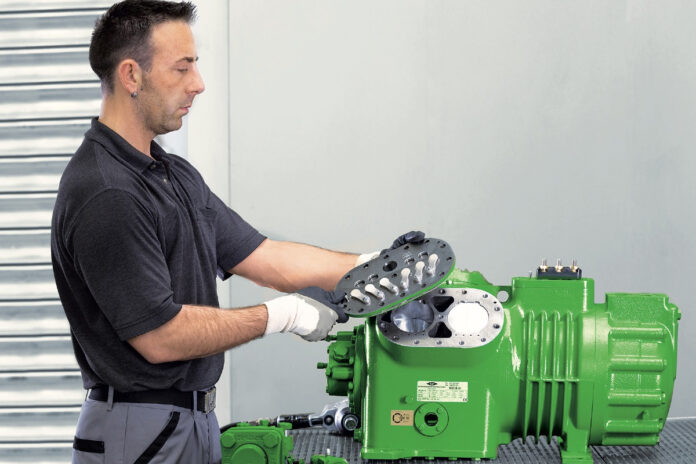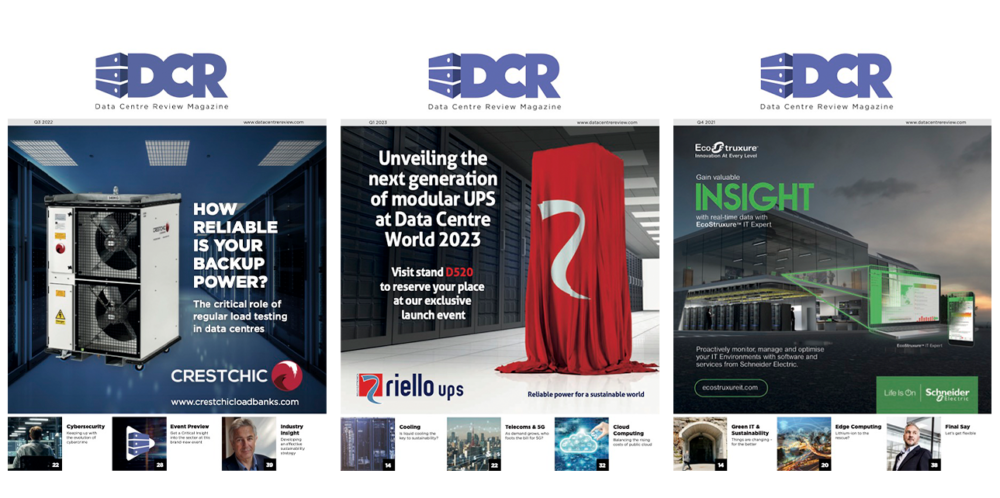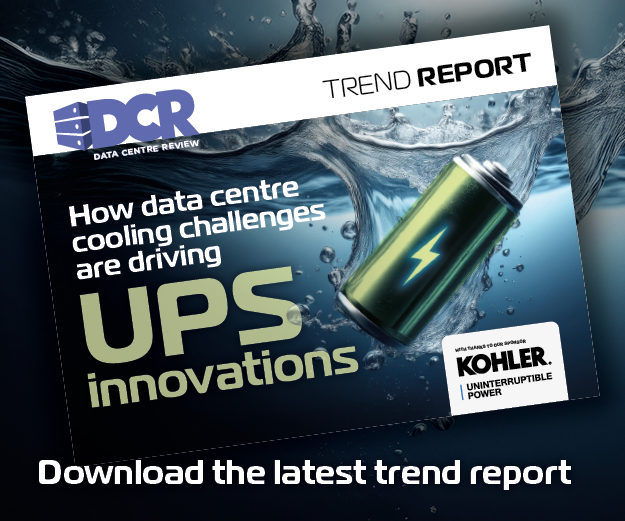As sustainability targets tighten and pressure mounts on data centres to reduce waste and embodied carbon, circular economy principles offer a new blueprint for efficiency – with remanufactured cooling components emerging as a major opportunity, according to Will Pribyl, GM of Green Point UK.
Data centres are under increasing pressure to reduce their environmental impact, not just in terms of energy use but across the full life-cycle of materials and systems. Increasingly, this means moving beyond traditional efficiency metrics and embracing the broader, more holistic framework of the circular economy.
The key principle behind the circular economy is to keep materials and products in use for as long as possible, reduce waste to a minimum, and repair equipment rather than replace with new. For data centres, this represents a significant shift from the linear ‘take-make-dispose’ model that has historically dominated the sector.
In practice, adoption of the circular economy principle in data centres involves everything from the design of buildings and IT hardware to use of modular systems that allow for flexible upgrades without large-scale replacements. It also includes the responsible management of end-of-life assets and the capture and reuse of waste heat produced by data centres in surrounding communities.
What was once a forward-thinking concept is now becoming a strategic and, increasingly, regulatory necessity. Several factors are converging to make circularity a priority for UK data centre operators:
- Net zero commitments: With the UK Government’s legally binding target of achieving net zero greenhouse gas emissions by 2050, data centres are expected to play their part. Operators are already beginning to address the need to reduce embodied carbon and extend equipment life.
- Investor and customer pressure: Stakeholders require transparency in environmental performance, especially around material use and energy consumption. Circular strategies often contribute directly to Environmental, Social and Governance (ESG) goals.
- Energy and cost efficiency: This doesn’t just reduce environmental impact, it improves the bottom line. Initiatives such as reusing refurbished servers or designing cooling systems with longer lifespans can significantly reduce operational costs.
- Supply chain resilience: The Covid-19 pandemic and ongoing geopolitical issues have exposed vulnerabilities in global supply chains. Being able to source remanufactured or locally repaired components reduces dependency on potentially volatile supply lines.
The regulatory framework is also evolving in the direction of codifying circular economy principles. The Environment Act 2021 introduced a legal requirement to improving resource efficiency and waste reduction, laying the groundwork for upcoming material use targets.
The Waste Prevention Programme for England, titled Maximising Resources, Minimising Waste, is a strategic initiative by the Government aimed at transitioning towards a more sustainable economy based on circular principles. Currently under consultation, it is expected to place greater emphasis on the tech and infrastructure sectors, including data centres.
At the same time, reporting requirements such as Streamlined Energy and Carbon Reporting (SECR) and the Energy Savings Opportunity Scheme (ESOS) are nudging companies towards more carefully planned energy and material efficiency strategies.
And in large metropolitan areas such as Greater London, local planning policy now often requires a Circular Economy Statement and whole-life carbon assessment for major infrastructure projects, including new data centres.
From all this, the direction of travel is clear. Government and local authorities are increasingly embodying circular economy principles in law and the planning system, presenting both challenges and opportunities for business in general and data centre operators in particular.
Remanufactured compressors: a practical step toward circular cooling
One often overlooked but critical area of opportunity lies in data centre cooling systems, particularly the compressors that drive chillers and heat pumps. These components are vital for maintaining safe operating temperatures in server halls, and represent both a significant capital cost and a major source of embodied carbon.
Traditionally, end-of-life compressors are scrapped and replaced with new units, in the process incurring a substantial embodied carbon hit. However, a circular economy approach offers a smarter alternative in the form of remanufactured compressors.
Remanufacturing involves disassembling a used compressor, thoroughly cleaning it, replacing worn or outdated parts, and then reassembling and testing the unit to meet or exceed the original equipment manufacturer specifications. Unlike simple repair or refurbishment, remanufacturing provides a unit that is functionally equivalent to new, but with significantly lower environmental impact.
Using remanufactured compressors supports circular economy goals in several key ways:
- Lower carbon footprint: The production of new compressors is energy intensive. Remanufactured units can dramatically lower embodied carbon. A Life Cycle Assessment (LCA) comparison between new and remanufactured compressors reveals the dramatic differences in embodied carbon. For example, a new 20hp semi-hermetic compressor has a carbon footprint of 1590kg CO2e, whereas a remanufactured version of the same compressor ranges from 110 to 168kg CO2e, around one-tenth that of a new unit.
- Reduced material consumption: By reusing the compressor’s core structure and some internal components, remanufacturing conserves raw materials such as steel, copper, and aluminium.
- Shorter lead times: Remanufactured units are often available more quickly than new ones, a crucial benefit when maintaining uptime in a mission-critical facility.
- Cost efficiency: Remanufactured units cost less than new, while delivering the same reliability and performance. Our own remanufactured compressors come with warranties comparable to new equipment.
- Extended asset lifespan: Incorporating remanufactured components into a long-term maintenance strategy can extend the useful life of cooling systems, delaying costly full system replacements.
- Demonstrating stewardship: As sustainability assessments become more complex, the use of remanufactured components like compressors can be a tangible way for data centres to demonstrate circularity in action. Whether reporting under SECR, meeting planning requirements, or pursuing voluntary certification schemes such as BREEAM or LEED, the ability to show reduced material use and lifecycle emissions helps demonstrate environmental stewardship and give a competitive advantage.
The circular benefits of remanufactured compressors are now also being recognised in other sectors, for example in transport applications. Siemens Mobility is using remanufactured BITZER air conditioning compressors in train HVAC systems, enabling customers to keep train fleets operating in tip-top condition while achieving their environmental and sustainability goals.
Conclusion
Circular economy principles are increasingly influencing not only how data centres operate, but how they are designed and maintained. As regulation tightens and society demands more sustainable infrastructure, operators are starting to embrace strategies that extend asset life, reduce waste, and lower embodied emissions.




